Going Native in the Garden Isn't Easy
I've made a mess of it. Here's how you can do better--and should.
by Richard Conniff
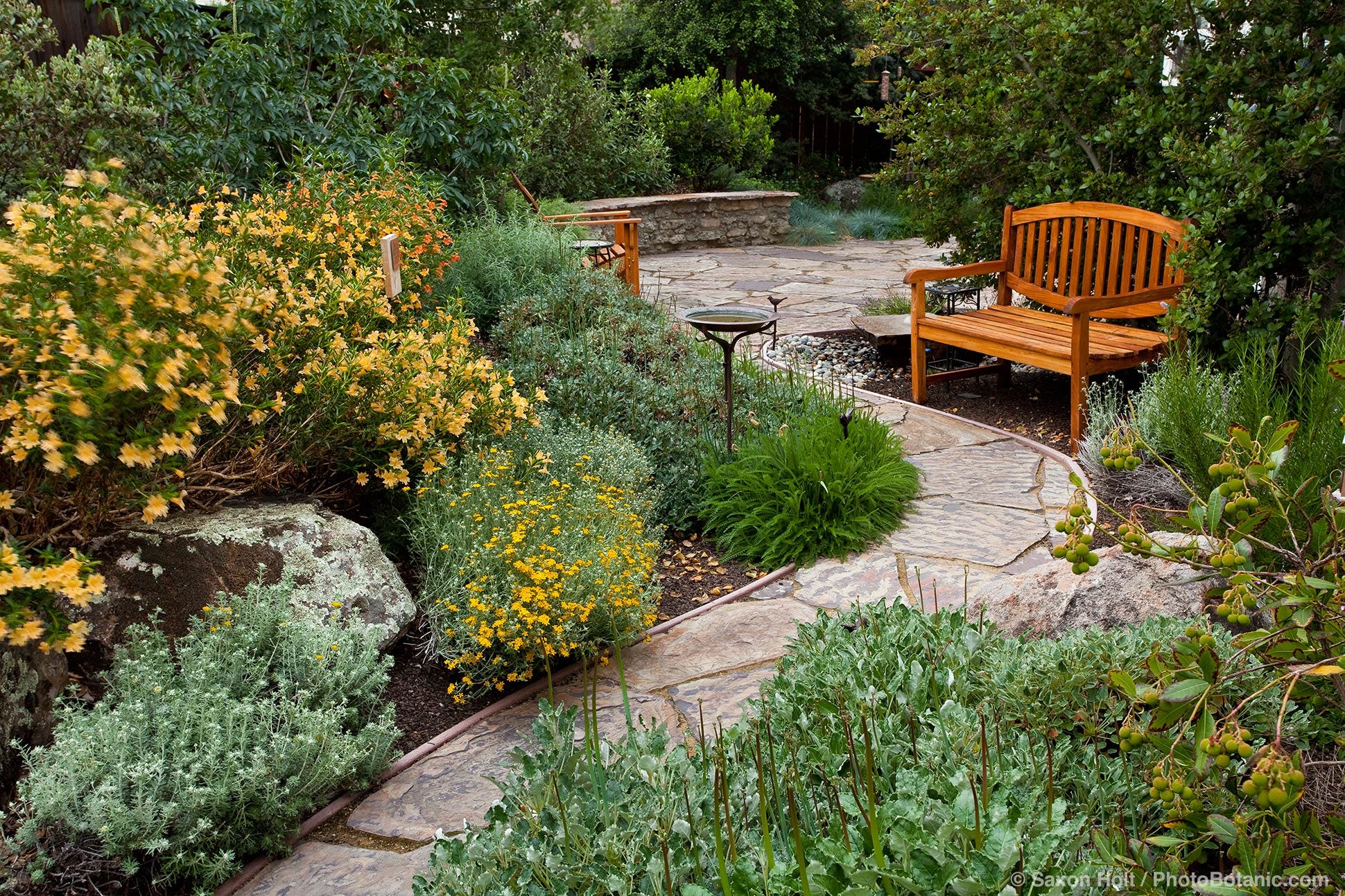
In my dreams, I sit on a handsome garden bench sipping a gin and tonic. I’m in one of those native gardens seen in books and magazines, in a little sylvan cul de sac, at the end of a curving path lined with layered patches of shrubs and perennials, all planted with birds and butterflies in mind, but also seemingly timed for color-coordinated flowering.
It’s the sort of place that’s meant to heal nature by reconnecting native wildlife with the plants they have evolved to depend on. Incidentally, the ambition is to re-connect us with nature and induce feelings of wonder and tranquility. But I have to be honest. When I go into my own native gardens, I am like one of those overwrought characters in a melodramatic 1930s movie crying: “My god, darling, what a fool I have been!”
I see only my mistakes—so, so many mistakes. Let me name a few:
Mistake #1: A year or two ago, we decided to stop mowing a shaded patch of lawn on the edge of the woods, to see if good things might come back on their own. What came back was mainly Japanese stiltgrass, which turns out to be the demon god of invasive species hereabouts. They—always they—grow in dense tangles and each plant in the tangle can produce 1000 seeds. Because we let that first patch go to seed, we are now in a daily struggle to keep tens of thousands of stiltgrass plants from ever going to seed again because they will overwhelm everything. They arrived here a century ago as packing material on ceramics from China, but seem to be a recent arrival in my wooded neighborhood. My hunch is that the seeds came in on the tires of the mail truck: You see banks of stiltgrass now fanning out around each mailbox.
Mistake #2: I’ve had sumac plants springing up all over the place, and thought nothing of it. Staghorn sumac is a native species beneficial to bees, wasps, beetles, birds, and even some small mammals. I should have looked more closely: What I have isn’t sumac at all, but tree of heaven, another invasive that is the favorite host plant of these notorious insects, which turned up recently on our deck:
Spotted lantern flies are the bane of crops, shrubs, and trees, which they weaken and kill by piercing the phloem tissue and sucking the sap. They are thought to have arrived in this country from southeast Asia around 2012, and have since spread mainly in the east, from North Carolina up to the Great Lakes, and possibly also in some western states. So check out your property. Both sumac and tree of heaven leaves are lance shaped, but, among the telltale differences, sumac leaves have a finely serrated edge and tree of heaven leaves are smooth. Starting in October, I will have to cast out the heavens, being careful to scrape off any egg masses into a plastic big of alcohol. Here are some Pennsylvania State Extension Service videos on how to identify and get rid of these trees if you have them. I am still struggling to get my head around the idea of keeping male specimens as bait to catch and kill these nasty creatures.
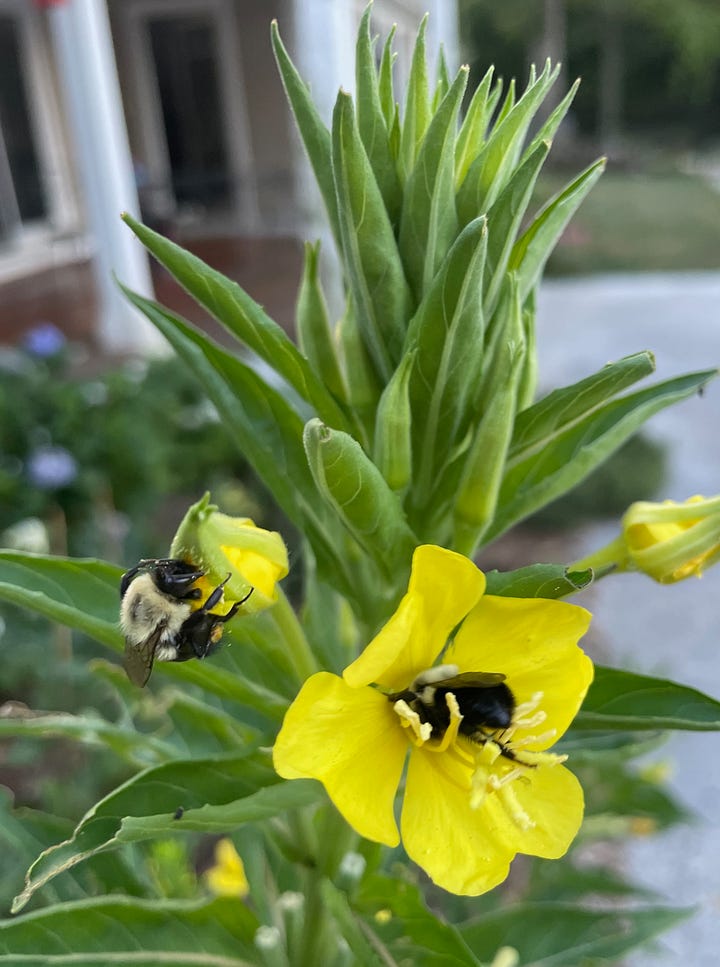
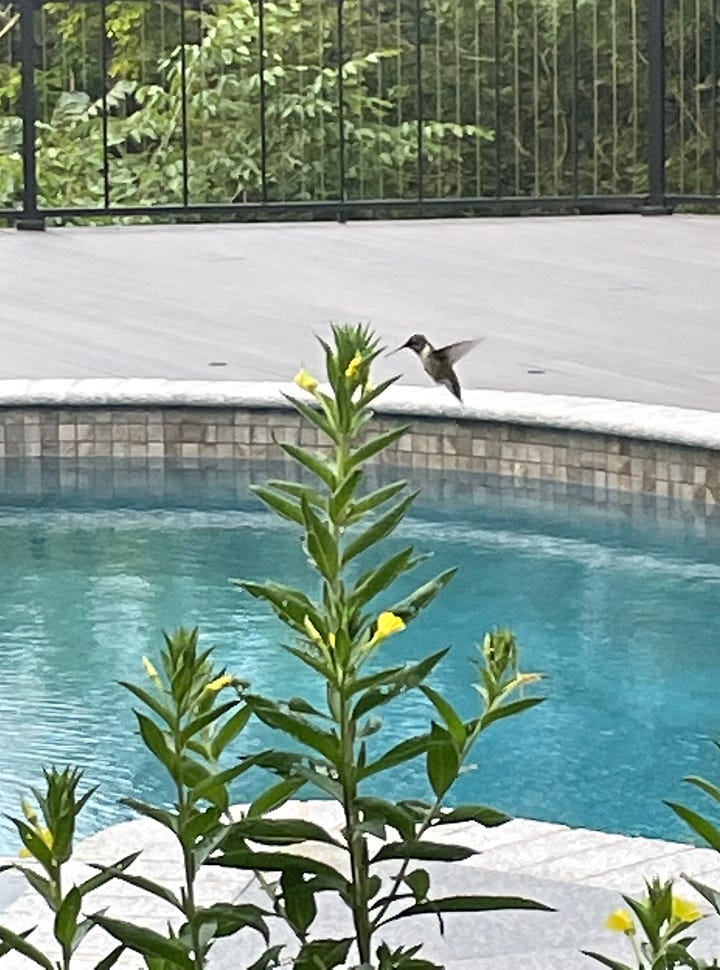
Mistake #3: Even when I do the right thing, I seem to have a way of going wrong. A few years ago, a common evening primrose showed up and I encouraged it even as it grew much too high for the location. It’s a native species and its yellow flowers attracted the attentions of bumblebees and ruby-throated hummingbirds, which was gratifying. But primroses turned up everywhere the following year, crowding the lupines, invading the strawberry bed, and otherwise making themselves a nuisance. So I started to rip them out. Then, last week, I ran into a lovely column about these primroses on the highly recommended Chasing Nature substack, by my colleague Bryan Pfeiffer. The flowers open at night and close by day, he wrote, and when they close the petals often wrap snugly around one of their pollinators, the primrose moth, which then spends the day safely napping within this floral shelter.
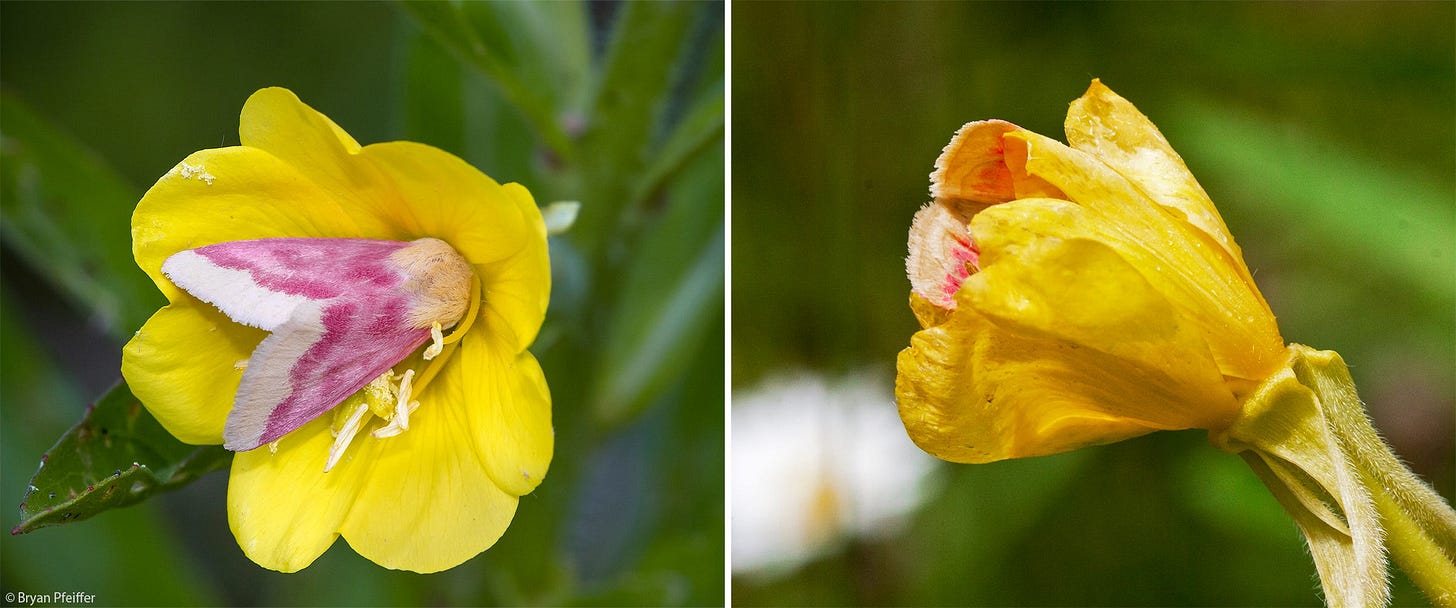
I was immediately thrown into guilt and despair at having plucked out so many primroses (“My god, what a fool …,” etc), and also about having failed to notice the primrose moths. (Bryan in turn kindly admitted having failed to notice that hummingbirds also feed on primroses.) Now the question is how to have primroses without having primroses EVERYWHERE. One of his readers wrote about having a “primrose bed” and I thought, “HA!” If you know how to achieve that happy state, please advise.
With a few species, on the other hand, I’ve begun to fix my original mistakes. For instance, I planted black cohosh (Actaea racemosa) in a shady spot by the front door, where it thrived and its flowers were routinely ravished by frantic bumblebees.
Unfortunately, the plants grew quite long, and overhung the front walk, where human visitors were unenthusiastic about brushing past hordes of delirious bumblebees. So now I have begun relocating the black cohosh plants to the same patch where the stiltgrass started, in the hope that they will crowd out any future stiltgrass resurgence and also allow bees and flowers to get it on unmolested by ignorant humans.
Despite these mistakes (and so many more), we have wildlife everywhere. Baltimore orioles nested successfully this summer in an oak tree overhanging the deck, bluebirds in our bluebird house sent off three crops of fledglings, and a house finch couple nested beside the porch door, all within about 50 feet of one another. We get only partial credit because we lived in a heavily wooded area (pileated woodpeckers at no extra charge) and I can’t claim we have as many bees, butterflies, and other insects as we need. But we certainly have more than we would with a grass monoculture, or with a garden full of the standard pretty but non-native flowers propagated without regard for native wildlife.
It’s worth the effort, I think, especially given the catastrophic declines in bird, insect, and other wildlife populations just over the past half-century. Here are my suggestions for how you can get started without repeating my mistakes:
First find your motive. Start with Nature’s Best Hope, in which entomologist Doug Tallamy describes how replacing half the lawns in our yards with native plants could restore North American biodiversity by creating a 20-million-acre “Homegrown National Park.” To take one example of the need: Tallamy describes how a single pair of Carolina chickadees must gather 350 to 570 caterpillars every day for 16 days—one every three minutes, 6000 to 9000 in total—to rear a single clutch of their young to fledging. It’s possible for them only if the caterpillars live nearby, and they can live nearby only if there are plenty of native plants—oak trees, yes! Bradford pears, no-o-o!— to host them. I have also gotten inspired listening to radio interviews with ecological horticulturist Rebecca McMackin, who now has a Ted Talk and a substack. (But please don’t blame either Tallamy or McMackin for my mistakes!)
Start small. When I wrote “my gardens” in an early paragraph, I had to go back and count. I discovered to my chagrin that I have carved out at least nine separate areas where I have planted native species. Probably 10 or 11 areas if you count the ones that have sputtered out, and others where I am just beginning to relocate plants like the black cohosh. Sorry, make it a 12. I just remembered the circle in the driveway. It’s too much, and it’s a mess.
Follow the Rule of 10. If you are like me, enthusiastic about such things but also stupid, you pick up a couple of milkweed plants, some coneflowers, a few black-eyed susans, and plant them here and there in the expectation they will “fill out” an area. Instead, they vanish. Whatever you plant, you need at least 10 of them to have any visual impact, for you and for the birds and insects you hope will find them. Try starting with 10 of just one surefire species—coneflowers or black-eyed susans in my neighborhood—and follow the directions for planting. Then build from there. You can find native plants suited to your area by entering your zip code at native plant finder sites maintained by the National Wildlife Foundation and the Audubon Society. Also check out this site at the Xerces Society for Invertebrate Conservation.
Pay attention to what you already have. A neighbor once cut down a half-acre of woods, claiming that the idea was to plant native species. But what she cut down—easily 100 oaks, maples, and other species—were almost entirely native, and had been home to a treetop nest of herons squawking like dinosaurs. What she replaced them with were 10 or 12 widely-spaced specimen trees, also native, but at a terrible cost to wildlife. As a rule, do not remove any plant until you know it’s non-native. Try using apps like iNaturalist, or PlantNet, or even the plant identification function on your smartphone photo app to identify before you attack.
Be considerate of neighbors (even if they don’t return the favor). Instead of turning your front lawn into wall-to-wall native exuberance, Tallamy suggests maintaining a grass edge in front for the socially-acceptable appearance of neatness and regularity.
Fact check your plant dealer. Many retailers do not really know what they are selling and will happily deal in invasive species. You may take home something labeled “butterfly weed,” a 30-inch-tall native that’s attractive to many butterfly species and also to the human eye with its clusters of orange flowers. But then it turns out to be a 15-foot-tall butterfly bush. (Big difference.) Butterfly bush (Buddleia davidii) is attractive to many butterflies and to the human eye, but as I have lately discovered it’s an invasive. Its seeds scatter across the countryside and displace the native species that would host butterfly caterpillars, and it provides no such reproductive benefit to make up for the loss. The same apps mentioned above will help you identify plants before you buy them. You will do better with dealers specializing in native species.
Get help, if you can afford it. A garden designer may be able to suggest which plants will best multi-task not just at pollinator-friendliness but also, for instance, at erosion control or privacy screening. We recently hired a designer for a separate project (don’t ask!), and for $750 he developed a design in consultation with us, and provided a detailed map with species names and spacing over a 1200-square-foot-area. What might have been chaotic now seems reasonably doable, with hired help to do the planting. Now I just need to find someone to help keep up with the weeding.
As Americans and as people who care about the health of the planet, we live right now with a rising sense of helplessness. We are increasingly under the thumb of a corrupt government that no longer believes in preventing climate change, saving endangered species, or even protecting public health. They want to sell off our public lands, including our national parks, so multinational corporations can turn them to profit.
Gardening can seem like a trivial response to such overwhelming threats. But when you plant native species, and the bees and birds turn up in response, it feels real. Much more real than a bunch of billionaires and Fox News clowns in Washington, D.C., pretending to be public servants.
The larger vision of a Homegrown National Park in our yards, on land they cannot sell out from under us, makes those first returning birds and insects feel like something greater than mere gardening, greater than a silly dream about a gin-and-tonic on a nice garden bench. Try it, please.
Let your native garden be the green fuse that drives your sense of hope, and when it flowers, then act—with apologies to Superman—for truth, justice, and the American way, by whatever means are in your power.


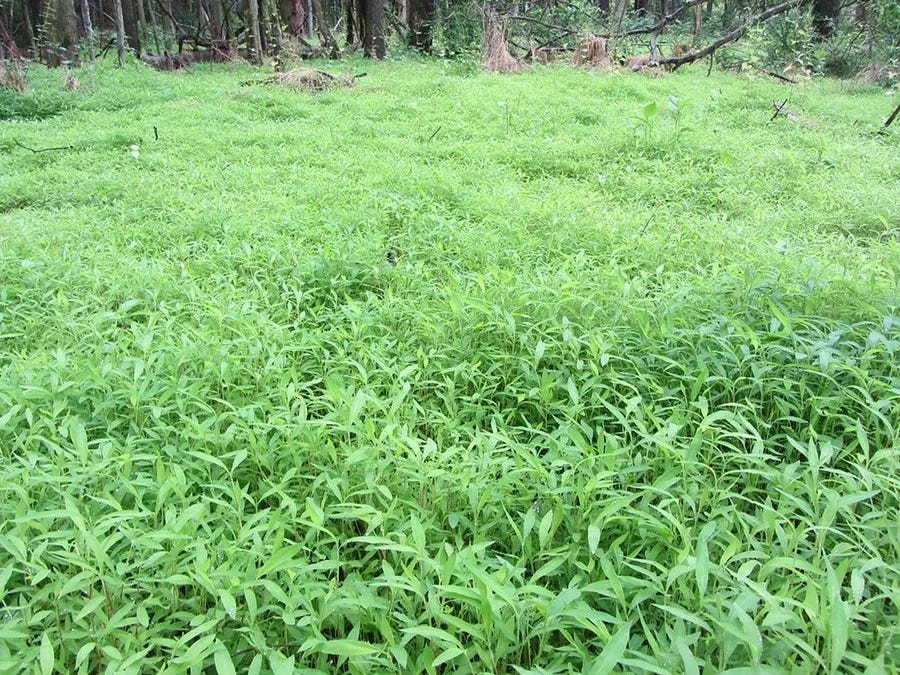
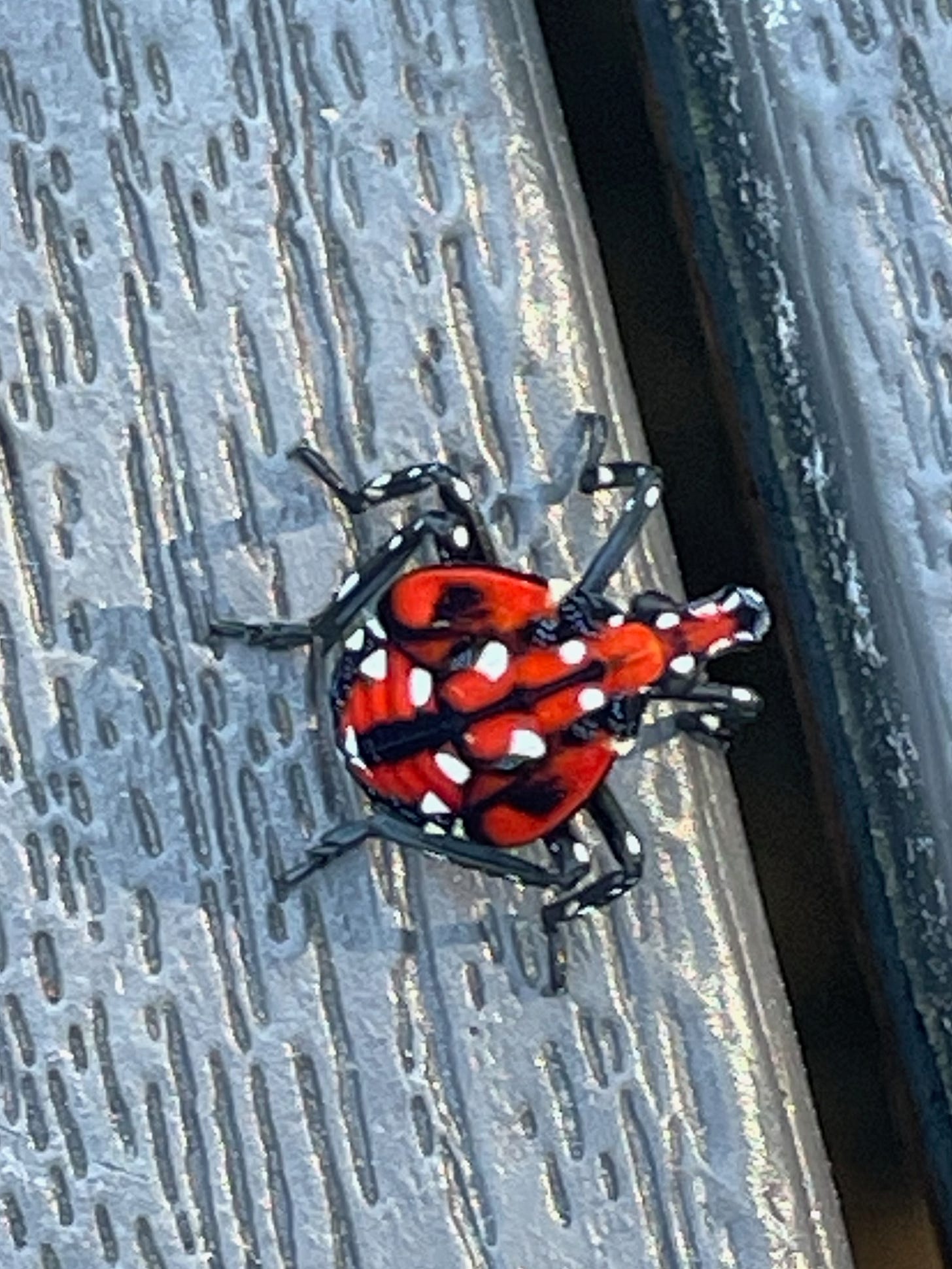
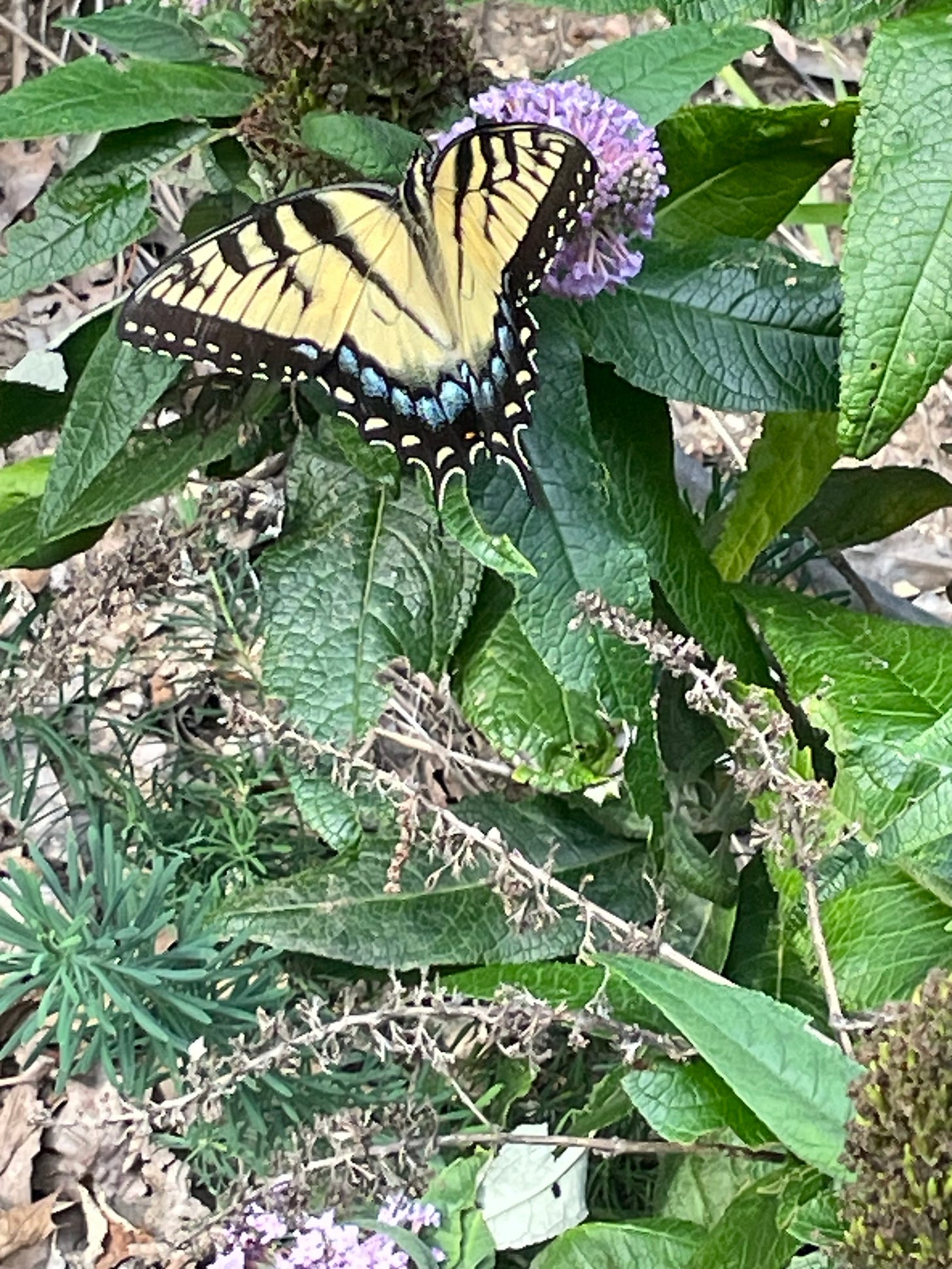
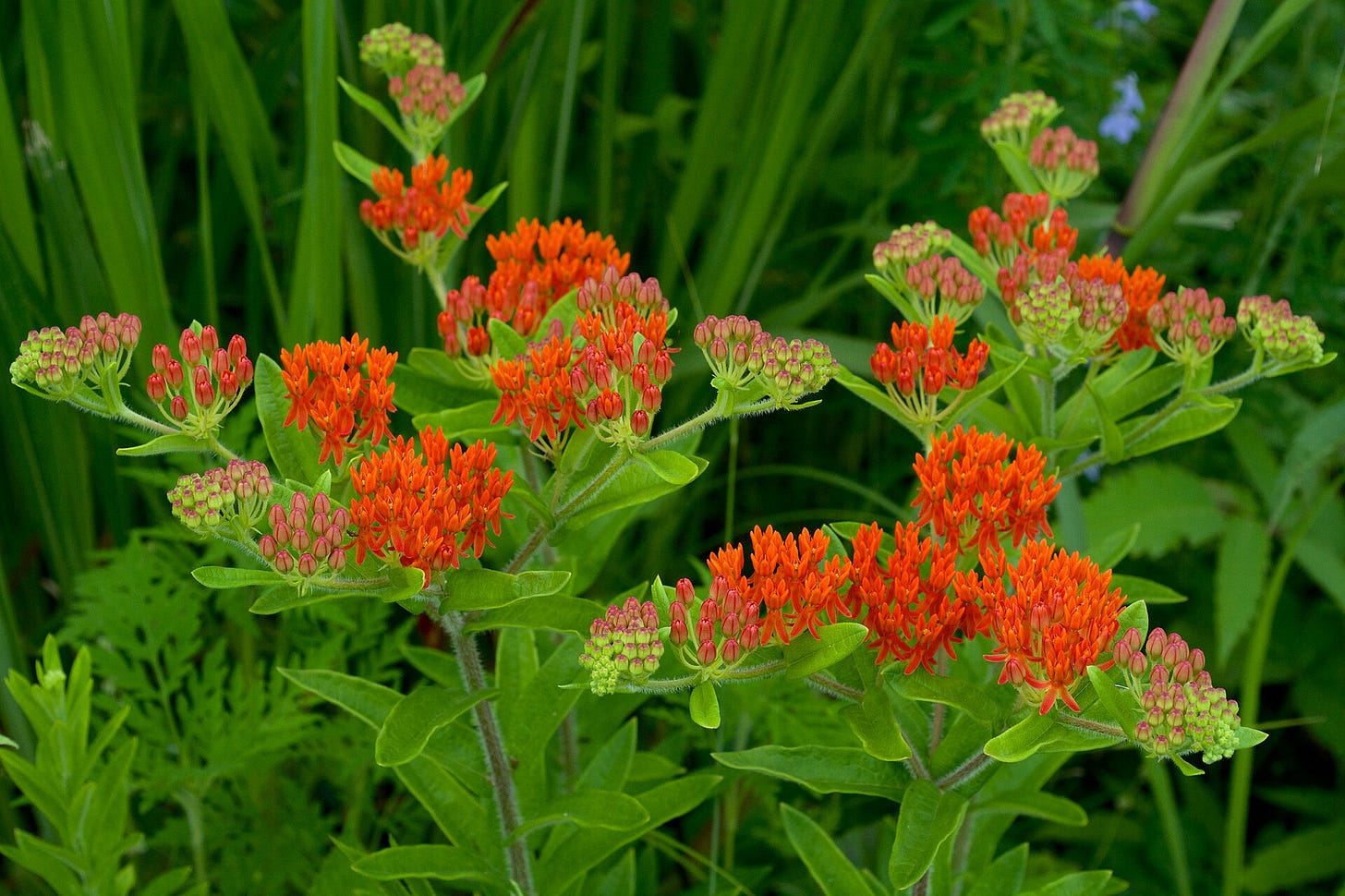
I suppose since I am offering apologies to Superman, I should do at least as much for Dylan Thomas. Worth a read, and a re-read: https://poets.org/poem/force-through-green-fuse-drives-flower
I have an urban heart, am the furthest thing from a gardener, yet your careful, encouraging words of tiny, personal revolution made me sing inside my head and I felt an iron chain give way around my gut. Even small acts of thoughtfulness toward Mother Nature can help us out of our current state of helplessness during the rule of a senile sociopath. Thank you for the encouragement!